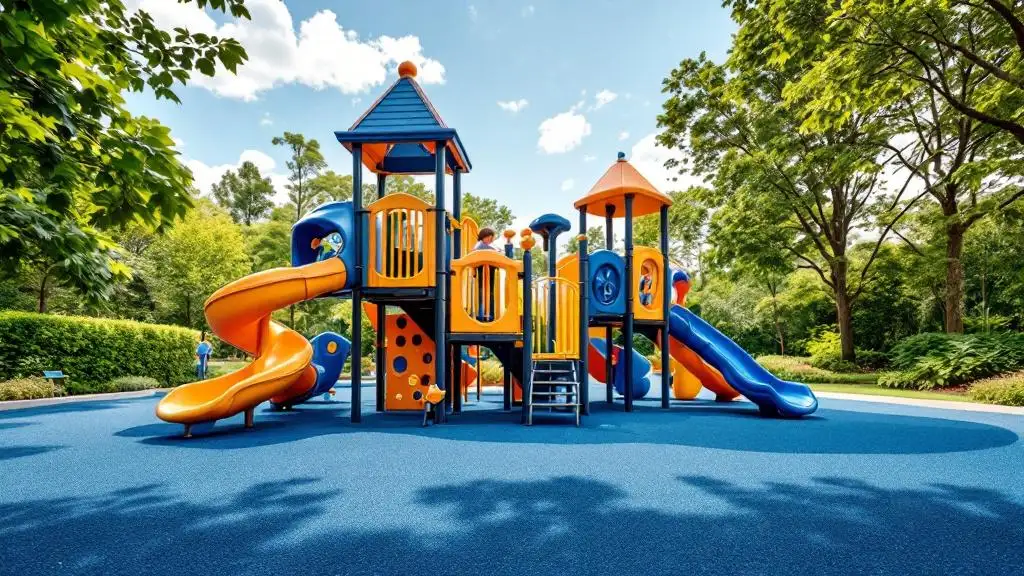
Understanding the Importance of Pediatric Rehab
Pediatric physical therapy is a specialized branch of rehabilitation aiming to enhance the physical development and health of children. It is a crucial component in managing developmental delays, neurological conditions, injuries, and congenital disabilities. This article explores the multifaceted role of physical therapy in fostering optimal growth, recovery, and independence among children, emphasizing the innovative practices and collaborative approaches that define contemporary pediatric rehabilitation.
The Scope and Objectives of Pediatric Physical Therapy

What is the role of physical therapy in pediatric development and rehabilitation?
Pediatric physical therapy involves the assessment and treatment of children to enhance their movement, strength, balance, coordination, and overall physical function. Therapists work to support children in reaching developmental milestones, recovering from injuries or surgeries, and managing long-term disabilities.
Assessing developmental and neuromotor status
The initial step in pediatric physical therapy is a thorough evaluation. Licensed pediatric therapists observe and analyze a child's functional abilities, identify impairments, and assess neuromotor development. Tools like the General Movements Assessment (GMA) and the Alberta Infant Motor Scale (AIMS) help in early diagnosis, especially for conditions like cerebral palsy or neurodevelopmental delays.
Designing personalized therapy programs
Based on the assessment, therapists develop tailored care plans that focus on each child's unique needs and goals. These programs may include exercises, stretches, mobility training, assistive device evaluation, and specialized techniques such as neurodevelopmental therapy, Bobath, or Vojta approaches. Treatment techniques are engaging and developmentally appropriate to keep children motivated.
Supporting children from infancy to adolescence
Children from birth through 21 years can benefit from pediatric physical therapy. Interventions are adaptable for infants with conditions like torticollis, as well as teenagers recovering from sports injuries or surgeries. Therapists collaborate with families, schools, and medical teams to support children across different environments.
Promoting motor skills, strength, and coordination
The primary goal of pediatric PT is to facilitate normal motor development and maximize independence. Therapists focus on improving gross and fine motor skills, balance, endurance, and sensory processing. Activities include aquatic therapy, balance exercises, and functional mobility training.
Additional benefits and contemporary practices
Modern pediatric physical therapy also emphasizes holistic approaches using innovative technology, evidence-based interventions, and engaging play-based methods. These strategies help children develop confidence, social skills, and a positive attitude toward physical activity.
| Focus Area | Techniques Used | Examples of Conditions Treated |
|---|---|---|
| Developmental Milestones | Motor learning, handling techniques, neurodevelopmental treatment | Cerebral palsy, developmental delays |
| Mobility and Strength | Gait training, balance exercises, strength routines | Post-injury recovery, orthopedic conditions |
| Sensory and Motor Control | Proprioceptive training, visual-motor integration techniques | Autism spectrum disorder, sensory processing issues |
| Postural and Respiratory Support | Postural analysis, respiratory therapy, stretch techniques | Spina bifida, respiratory conditions |
Pediatric physical therapy aims to improve functional mobility, reduce impairments, and support overall well-being, helping children reach their full potential in daily life.
Techniques and Innovations Driving Pediatric Therapy

What techniques and approaches are used in pediatric physical therapy?
Pediatric physical therapy utilizes a broad spectrum of techniques tailored to meet each child's unique developmental and medical needs. These methods include well-established orientations like the Bobath approach and neurodevelopmental treatment (NDT), which focus on normalizing movement patterns and facilitating functional mobility.
Motor learning strategies are also central, emphasizing repetitive, meaningful activities that promote skill acquisition. Sensory integration and handling techniques are used to improve sensory processing and body awareness, essential for children with neurological conditions.
In addition to traditional methods, innovative therapies are increasingly adopted. Aquatic therapy supports movement and strength in a low-impact environment, while microcurrent therapy uses electrical stimulation to aid tissue healing and reduce pain.
Manual therapies such as stretching, massage, and the use of functional electric stimulation help enhance flexibility and muscle activation. Specialized techniques like Vojta therapy, constraint-induced movement therapy (CIMT), treadmill training, and proprioceptive training are employed to target specific issues related to neurological impairments.
Therapists often incorporate fun, engaging activities to make therapy sessions enjoyable and motivating. This play-based approach includes games, obstacle courses, and sensorimotor exercises aligned with developmental milestones.
A holistic, evidence-based approach is fundamental, involving interdisciplinary collaboration among healthcare providers, educators, and families. This ensures comprehensive care tailored to conditions such as cerebral palsy, autism spectrum disorder, and recovery after surgery or injury.
By combining these diverse techniques, pediatric physical therapy aims to improve mobility, strength, coordination, and independence, enhancing the overall quality of life for children from infancy through their teenage years.
Conditions Addressed and Treatment Goals
 Pediatric physical therapy is instrumental in managing a broad spectrum of health conditions affecting children’s mobility, development, and overall well-being. It can effectively address neurological disorders such as cerebral palsy, autism spectrum disorder, and neuromuscular conditions like muscular dystrophy. These therapies are tailored to improve motor skills, sensory processing, and coordination, facilitating better functional outcomes.
Pediatric physical therapy is instrumental in managing a broad spectrum of health conditions affecting children’s mobility, development, and overall well-being. It can effectively address neurological disorders such as cerebral palsy, autism spectrum disorder, and neuromuscular conditions like muscular dystrophy. These therapies are tailored to improve motor skills, sensory processing, and coordination, facilitating better functional outcomes.
In addition to neurological challenges, physical therapy also supports children with congenital and musculoskeletal conditions. Conditions such as spina bifida, a spinal cord defect, and torticollis, a condition involving abnormal neck muscle tightening, can be treated to improve posture, movement, and comfort. Therapists may employ specialized techniques such as stretching, strengthening, and positioning strategies to promote optimal growth and prevent deformities.
Children recovering from injuries, surgeries, or sports-related trauma benefit significantly from targeted rehabilitation programs. These are designed to restore strength, mobility, and coordination, enabling a safe return to daily activities and sports.
What conditions and disabilities can be addressed through pediatric physical therapy?
Pediatric physical therapy caters to a wide range of conditions including neurological disorders like cerebral palsy and autism, musculoskeletal and congenital issues such as spina bifida and torticollis, and post-injury or post-surgical recovery. It also helps manage developmental delays, balance issues, and orthopedic problems.
The ultimate goals of these interventions include improving mobility, preventing deformities, and supporting children to achieve greater independence. Whether through play-based sessions, manual techniques, or advanced technologies, physical therapy promotes holistic development, enhances physical strength, and boosts confidence in children living with various health challenges.
| Condition/Disability | Focus of Treatment | Typical Techniques Used | Expected Outcomes |
|---|---|---|---|
| Cerebral Palsy | Enhancing motor control, mobility | Balance training, neurodevelopmental therapy | Better posture, walking, and participation |
| Autism Spectrum Disorder | Sensory integration, motor skills | Sensory-motor activities, visual training | Increased coordination and social interaction |
| Spina Bifida | Posture correction, strength | Stretching, orthotic management | Improved walking ability, reduced complications |
| Torticollis | Neck mobility, muscle length | Stretching, positioning | Symmetrical neck movement, comfort |
| Post-surgical Recovery | Restoring function, strength | Gait training, manual therapy | Return to normal activities, reduced pain |
By focusing on individualized care plans, pediatric physical therapists help children reach their full potential, ensuring they develop essential movement skills needed for active, healthy lives.
Interdisciplinary Collaboration and Family-Centered Care

How can parents or caregivers access pediatric physical therapy services and understand its purpose?
Parents and caregivers seeking pediatric physical therapy can start by consulting their child's healthcare providers for referrals or by exploring local clinics and community health resources. Early access is especially important for children under three years old, as early intervention can significantly improve mobility and developmental outcomes.
Pediatric physical therapists are movement specialists who tailor treatment plans based on each child’s unique needs. These plans are often fun, engaging, and designed to meet developmental milestones through play and family involvement. Families should actively participate in therapy sessions, ask questions, and stay informed about the goals and techniques used.
Therapy may take place in different locations such as the home, school, or outpatient clinics, often involving an interdisciplinary team—including doctors, therapists, educators, and social workers—working together. This teamwork ensures comprehensive support for the child's physical, emotional, and social development. With open communication and a clear understanding of the purpose of therapy, families can better support their child's progress and foster independence.
Current Trends and the Future of Pediatric Rehabilitation

What are the current research topics and developments in pediatric physical therapy?
Recent advancements in pediatric physical therapy focus on evidence-based and innovative approaches tailored to children's unique needs. Researchers are exploring a wide variety of therapies and assessment tools aimed at improving outcomes for conditions like cerebral palsy, autism spectrum disorder, spina bifida, and neonatal complications.
A significant part of current research emphasizes early diagnosis and intervention. Tools such as the General Movement Assessment (GMA) and the Alberta Infant Motor Scale (AIMS) are instrumental in detecting neurodevelopmental delays soon after birth, allowing for timely intervention that can drastically influence a child's long-term development.
There is also a surge in integrating new technologies and holistic practices into therapy programs. Techniques like neurodevelopmental treatment, Vojta approach, and microcurrent therapy are combined with modern tools such as sensor-based feedback and virtual reality to enhance rehabilitation.
Studies are increasingly supporting the use of multisensory stimulation and motor learning-based practices—like Bobath, Margaret Rood, and Doman-Delecto—to optimize motor control, sensory input, and functional skills. These approaches are often paired with activity-based, engaging exercises designed to keep children motivated.
Research also emphasizes managing chronic conditions, easing transitions into adulthood, and refining outcome measures for therapy effectiveness. Collaborative, interdisciplinary efforts among physical therapists, medical professionals, and families are driving the development of more personalized, comprehensive care plans.
Overall, the ongoing research aims to improve the quality of life for children by promoting motor development, independence, and wellness, while integrating advances in technology and holistic care strategies.
Advancing Pediatric Physical Therapy for Better Outcomes
Pediatric physical therapy remains a vital, evolving field dedicated to fostering children's growth, recovery, and independence. Through innovative approaches, interdisciplinary teamwork, and family-centered care, therapy programs are continually advancing to meet the diverse needs of children. Early diagnosis, personalized interventions, and ongoing research ensure that pediatric rehabilitation maximizes each child's potential, supporting not only physical health but also emotional and social development. As the field progresses, ongoing collaboration, technological integration, and a holistic focus will undoubtedly contribute to healthier, more capable generations of children.
References
- A Brief Overview of Recent Pediatric Physical Therapy Practices and ...
- The Role and Benefits of Pediatric Physical Therapy - CHOC
- The Role of Physical Therapy In Child Development - Circle of Care
- Pediatric Physical Therapy | Franciscan Health
- HSS Pediatric Physical Therapy
- Pediatric Physical Therapy
- Pediatric Physical Therapy | RWJBarnabas Health
- Physical Therapy Programs in RI | Hasbro Children's
- The scope of pediatric physical therapy practice in health promotion ...
- A Brief Overview of Recent Pediatric Physical Therapy Practices and ...












